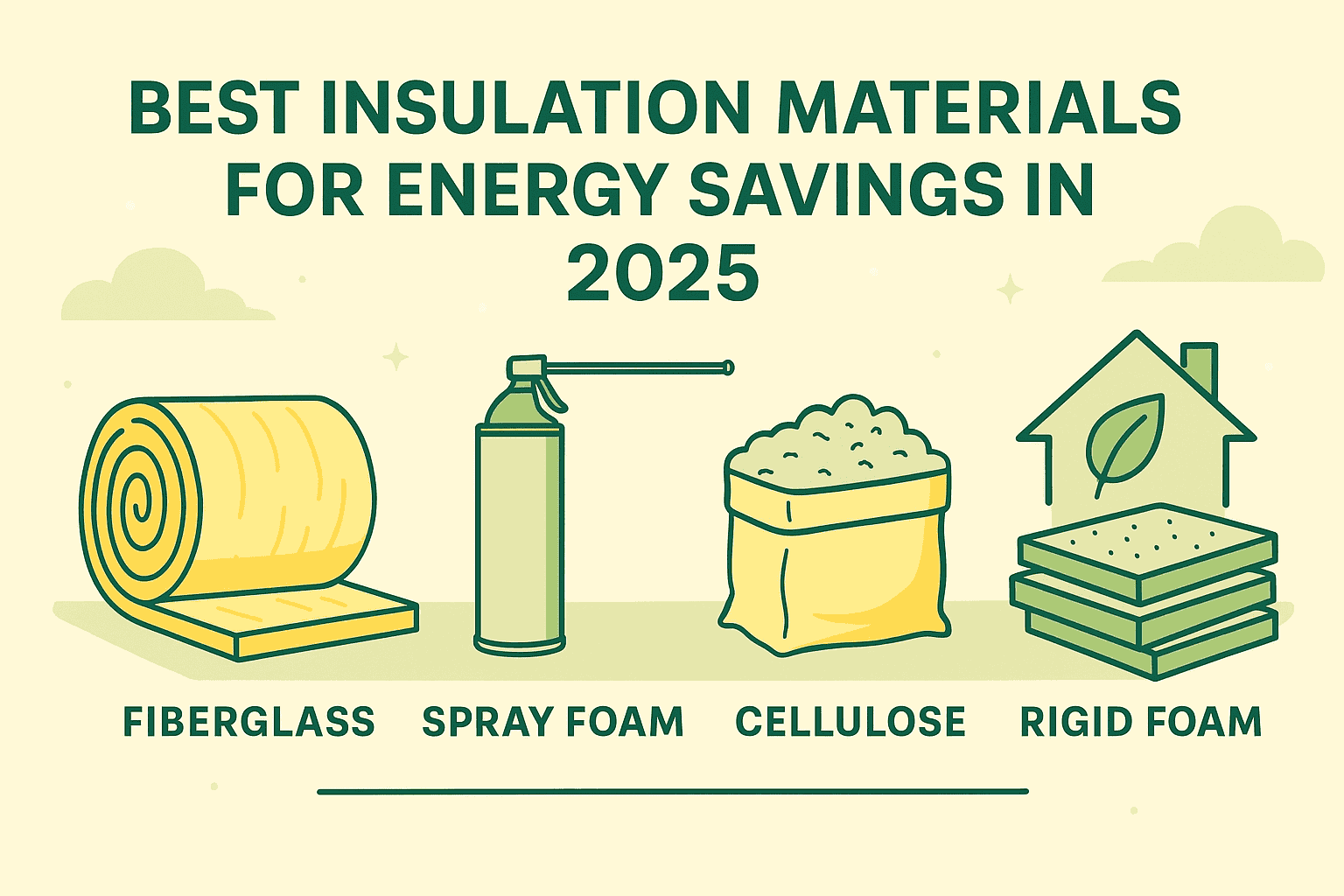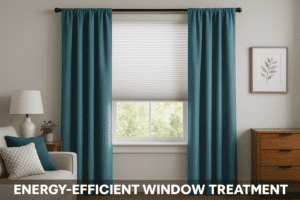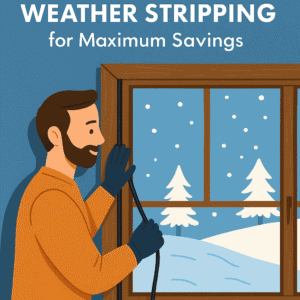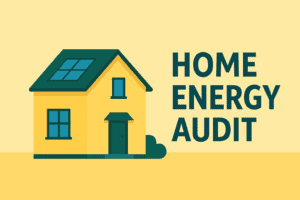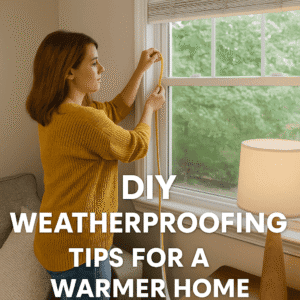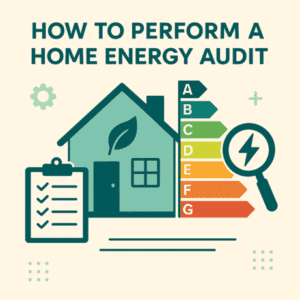Best Insulation Materials for Energy Savings in 2025
In 2025, energy efficiency is more important than ever, and proper insulation is at the heart of creating an energy-efficient home. Insulation prevents heat loss in the winter and keeps your home cool in the summer, making it a crucial factor in maintaining comfort and reducing energy bills. With various insulation materials available, choosing the right one can be overwhelming. This guide breaks down the best insulation materials for energy savings in 2025, covering their benefits, drawbacks, and ideal use cases. Whether you’re building a new home or upgrading your existing one, understanding these options will help you make informed decisions. Let’s explore how you can maximize energy savings through smart insulation choices.
Why Insulation is Crucial for Energy Savings
Insulation is your home’s first line of defense against energy loss, playing a vital role in maintaining indoor temperatures. By creating a thermal barrier, insulation reduces the need for constant heating or cooling, which directly translates to lower energy bills. Proper insulation minimizes the strain on your HVAC system, extending its lifespan and reducing maintenance costs. Beyond cost savings, insulation contributes to environmental sustainability by lowering carbon emissions. It also enhances indoor comfort, reducing cold drafts in winter and heat buildup in summer. For homes in extreme climates, effective insulation can make a dramatic difference in comfort levels. In 2025, with rising energy prices, investing in the right insulation is more critical than ever.
Key Benefits of Proper Insulation
- Reduced Energy Bills: Save up to 30% on heating and cooling costs.
- Enhanced Comfort: Maintain consistent indoor temperatures year-round.
- Lower Carbon Footprint: Reduced energy consumption means fewer carbon emissions.
- Soundproofing: Insulation also blocks outside noise, creating a quieter home.
- Increased Property Value: Energy-efficient homes are more appealing to buyers.
- Moisture Control: Prevents condensation, reducing mold and mildew growth.
- Extended HVAC Lifespan: Less strain on heating and cooling systems.
- Eco-Friendly Options: Choose sustainable insulation materials for greener living.
- Reduced Maintenance Costs: Well-insulated homes experience fewer temperature-related damages.
- Customizable Solutions: Different insulation types for various needs and budgets.
Perform a Home Energy Audit: Step-by-Step Guide
Types of Insulation Materials
There are several types of insulation materials available for home energy efficiency, each with its unique benefits. The most common types include fiberglass, spray foam, mineral wool, cellulose, and reflective or radiant barrier insulation. Choosing the right one depends on your home’s specific needs, climate, and budget. Here are some of the best Insulation Materials for Energy Savings.
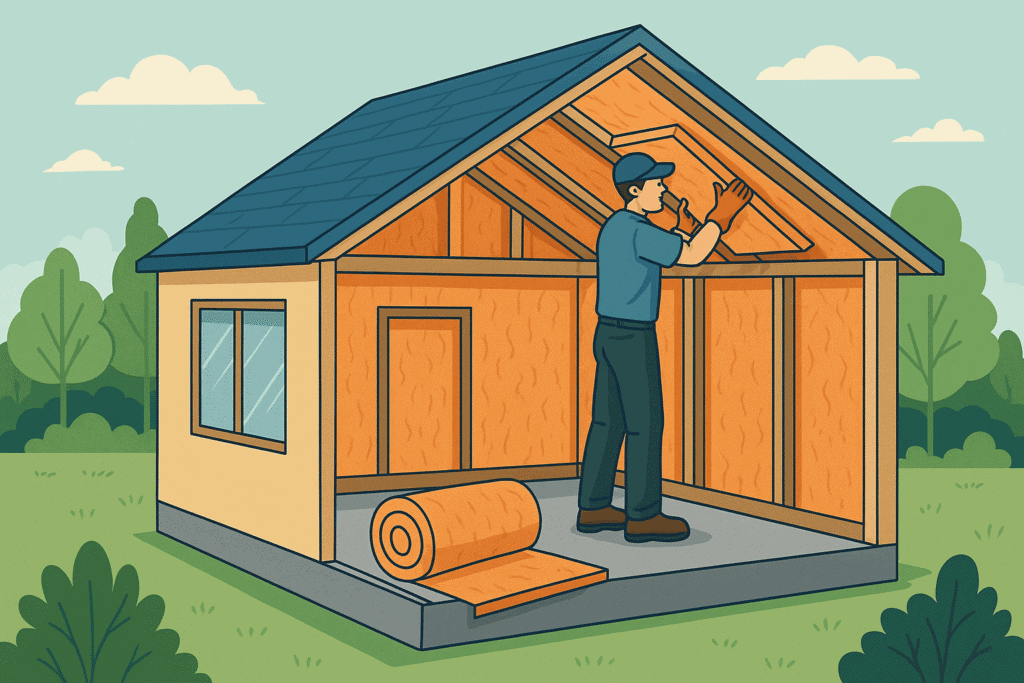
1. Fiberglass Insulation
Fiberglass insulation is made of fine glass fibers, making it an affordable and widely used option for homeowners. It is available in batts, rolls, or loose-fill forms and is suitable for walls, attics, and crawl spaces.
- Pros: Affordable, fire-resistant, easy to install.
- Cons: Can irritate the skin and lungs, requires protective gear for installation.
- Ideal For: Attics, walls, and areas with large open spaces.
- Energy Efficiency: Provides good thermal resistance with an R-value of 2.2 – 4.3 per inch.
- Eco-Friendliness: Often made from recycled glass, making it an environmentally friendly choice.
2. Spray Foam Insulation
Spray foam insulation is a liquid foam that expands into a solid barrier, providing superior air sealing. It is available in open-cell and closed-cell types, each with distinct benefits.
- Pros: Excellent air sealing, high R-value, durable.
- Cons: Expensive, requires professional installation.
- Ideal For: Hard-to-reach areas, small gaps, attics, and basements.
- Energy Efficiency: R-value of 3.5 – 7 per inch, depending on the type.
- Eco-Friendliness: Some versions use eco-friendly, low-GWP blowing agents.
3. Mineral Wool (Rockwool) Insulation
Mineral wool insulation, also known as Rockwool, is made from natural stone or recycled slag. It is known for its fire resistance and soundproofing properties.
- Pros: Fire-resistant, excellent soundproofing, moisture-resistant.
- Cons: Higher cost, can be challenging to install in tight spaces.
- Ideal For: Exterior walls, attics, basements, and ceilings.
- Energy Efficiency: R-value of 3.0 – 4.3 per inch.
- Eco-Friendliness: Often made from recycled industrial waste.
4. Cellulose Insulation
Cellulose insulation is an eco-friendly option made from recycled paper products treated for fire resistance. It is often blown into attics and wall cavities.
- Pros: Environmentally friendly, effective at reducing air leaks.
- Cons: Can settle over time, may require periodic reapplication.
- Ideal For: Attics, wall cavities, and hard-to-reach areas.
- Energy Efficiency: R-value of 3.1 – 3.8 per inch.
- Eco-Friendliness: One of the most sustainable insulation options available.
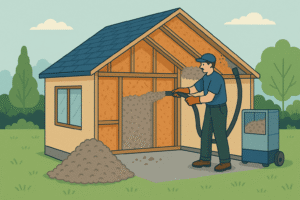
5. Reflective or Radiant Barrier Insulation
Reflective insulation, also known as radiant barrier insulation, uses reflective foil or coated plastic to block heat. It is highly effective in warm climates.
- Pros: Excellent at blocking radiant heat, lightweight, easy to install.
- Cons: Limited effectiveness in cold climates, must be installed properly.
- Ideal For: Attics, garages, and sun-exposed walls.
- Energy Efficiency: Reduces radiant heat transfer by up to 97%.
- Eco-Friendliness: Can be combined with other eco-friendly materials.
Comparing Insulation Materials for Best Insulation Materials for Energy Savings
| Material | R-Value Range | Cost per sq. ft. | Best For |
|---|---|---|---|
| Fiberglass | 2.2 – 4.3 | $0.40 – $1.50 | Attics, walls, floors |
| Spray Foam | 6 – 7 | $1.00 – $3.00 | Attic ceilings, crawl spaces |
| Mineral Wool | 3.7 – 4.3 | $1.00 – $2.50 | Soundproofing, basements |
| Cellulose | 3.2 – 3.8 | $0.50 – $1.80 | Attics, walls, floors |
| Radiant Barrier | N/A | $0.10 – $0.75 | Attics, roofs |
How to Choose the Right Insulation for Your Home
- Climate Considerations: Warm climates benefit from radiant barriers, while cold regions need higher R-value materials.
- Budget: Balance initial costs with long-term savings.
- Installation Method: DIY-friendly materials like fiberglass vs. professional installation for spray foam.
- Environmental Impact: Opt for eco-friendly options like cellulose or mineral wool.
- Prioritize air sealing: Choose materials with good air-sealing capabilities.
- Factor in soundproofing: Mineral wool offers superior sound absorption.
- Think about moisture control: Certain materials are better at preventing mold.
- Evaluate R-value: Choose materials with the right thermal resistance.
- Look for fire resistance: Mineral wool is highly fire-resistant.
- Plan for maintenance: Some materials, like cellulose, may need reapplication.
Tips for Maximum Insulation Efficiency
- Seal air leaks around windows and doors.
- Use weatherstripping to enhance insulation performance.
- Install a radiant barrier in hot climates.
- Opt for ENERGY STAR® rated insulation products.
- Regularly check and maintain your insulation.
- Use smart thermostats to monitor energy usage.
- Insulate water heaters and exposed pipes.
- Install insulated curtains for windows.
- Avoid compressing insulation material.
- Conduct periodic energy audits to identify improvements.
Conclusion
Choosing the right insulation for your home can significantly impact energy savings, comfort, and environmental impact. From fiberglass to spray foam and reflective barriers, each insulation type offers unique benefits. Evaluate your home’s needs, budget, and climate to make an informed choice. Remember, a well-insulated home not only saves money but also enhances indoor comfort and boosts property value. Stay tuned to The Watt Advisor for more energy-saving tips and product reviews.
Start improving your home’s energy efficiency with the right insulation materials today!
Best Insulation Materials for Energy Savings.
Author: The Watt Advisor Team | Updated: May 2025

